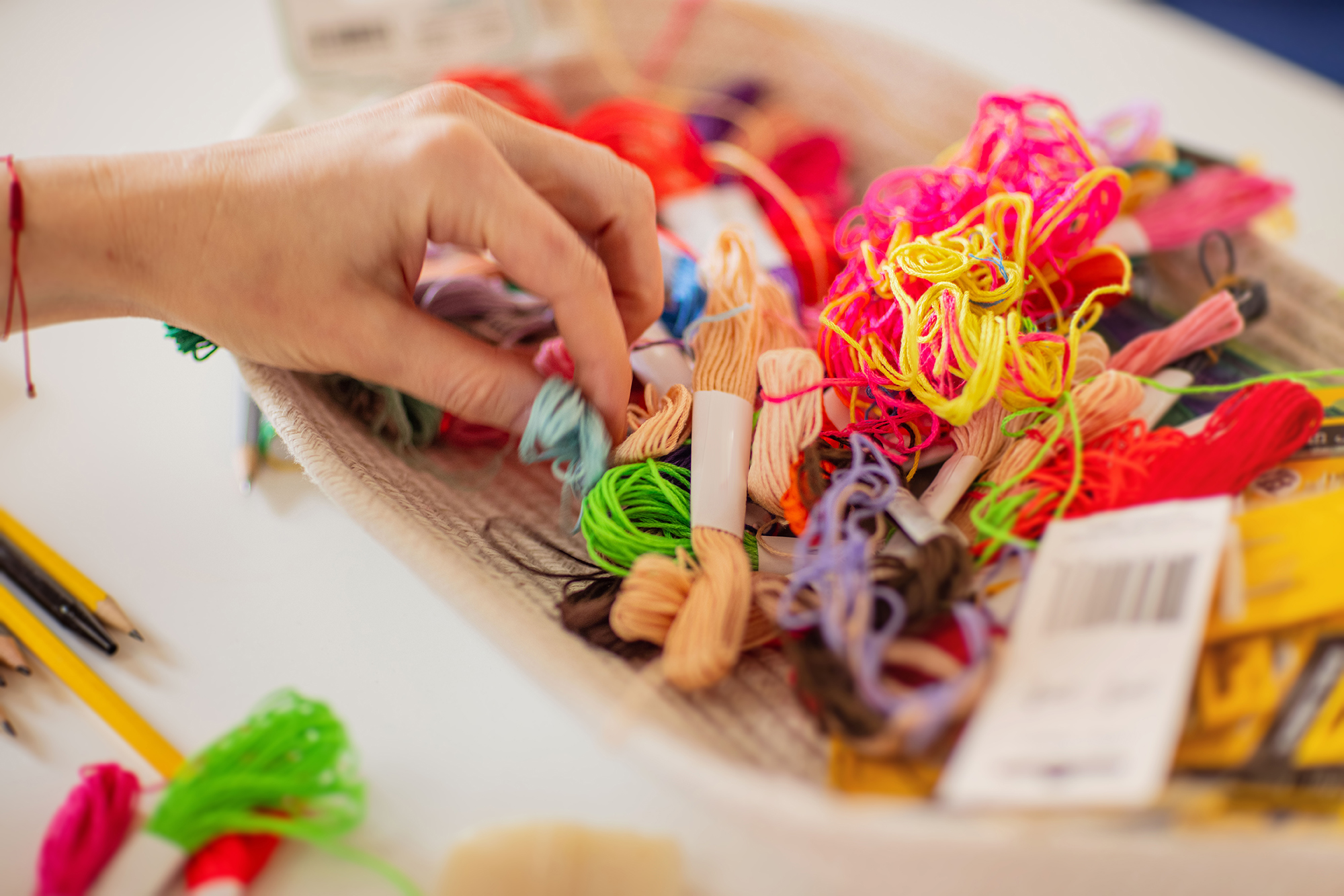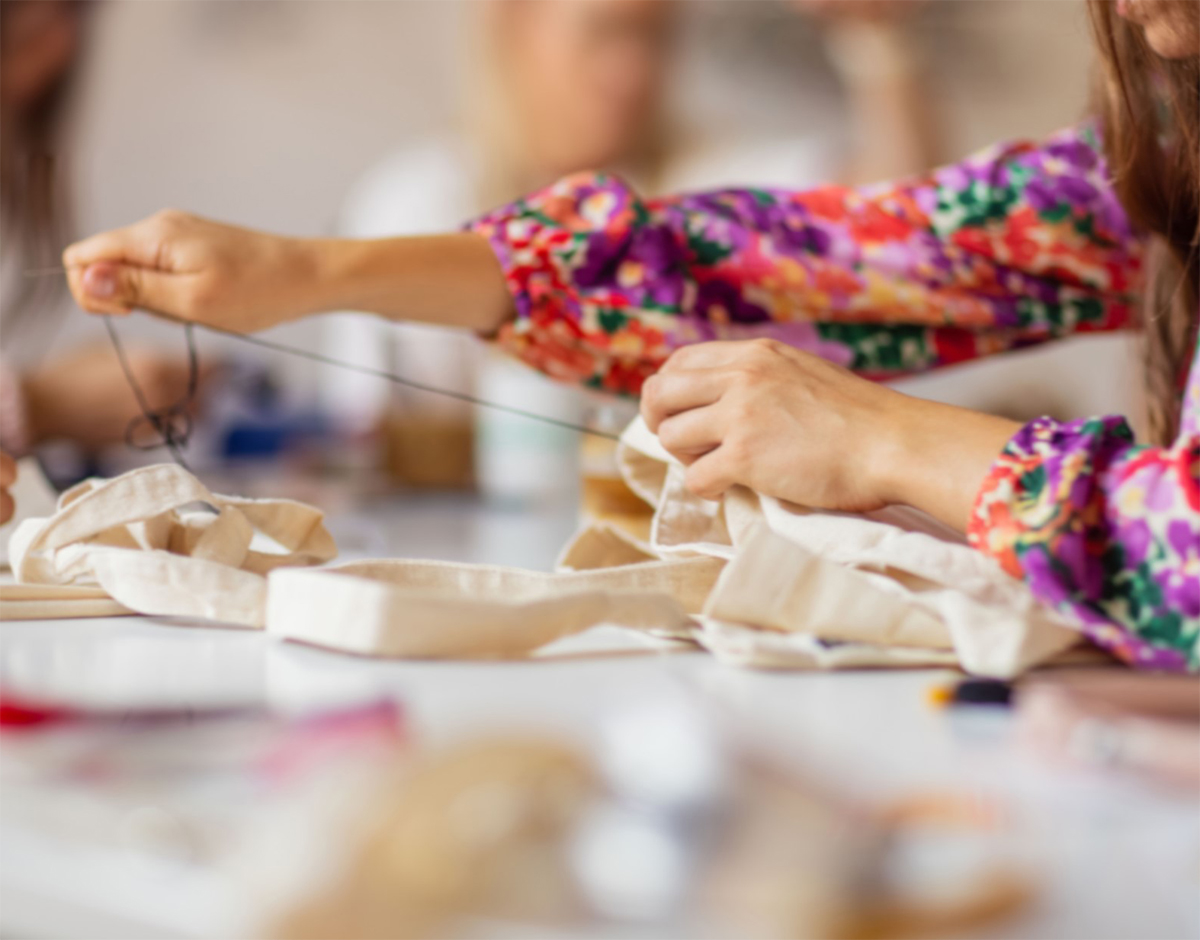Sewing and repairing clothes are skills that people learned many hundreds of years ago, developed and passed on to the next generation. This was until the textile industry began to develop rapidly in the 18th century as a result of the industrial revolution, and clothes began to be widely available. This phenomenon meant that the custom of sewing and mending them by hand began to disappear. Studies conducted in various countries over the past few years show that consumers prefer to buy new clothes and discard those they consider damaged or worn out (Diddi, Nan, 2019; Vogue, 2024; LPP, 2024). According to the LPP report (2024), 71 per cent of Polish consumers buy clothes once every three months or more often, only 49 per cent have repaired their clothes once or several times and only 6 per cent do so regularly.
However, it seems that recently the topic of repairing clothes has started to receive attention from both the fashion industry and consumers. In 2018, the Fashion Institute of Technology in New York showcased an unusual exhibition called ‘Fashion Unraveled’, which instead of pristine, new clothes presented garments that had been reworked, unfinished or showed clear signs of alteration (MFIT, 2018). Clothing and accessory companies are increasingly offering customers the opportunity to repair purchased items. Also, more and more people can be found online who show how they sew, repair and remake their clothes or resemble traditional tailoring techniques. Bringing back an interest in repairing clothes would be of great benefit on a global level and not only in environmental terms, but, as it turns out, also in social ones.
Fixing your clothes not only saves money, but also has psychological benefits. In recent years, there have been alarming reports that the increasing pace of life and its demands are causing more and more people to experience severe stress and consequent physical and mental health problems. This phenomenon is of such magnitude that the World Health Organisation recognises civilisation stress as one of the most serious threats of the 21st century, while researchers and practitioners are conducting a great deal of research in an attempt to find effective ways to reduce it. According to this research, the way people spend their spare time is of great importance in dealing with stress. Manual works, such as sewing or repairing clothes, are some of the activities that have a stress-reducing effect. Doing them requires precision and focused attention, thus allowing for calmness and preventing focus on negative thoughts (Futtermann, Collier, Wayment, & Birkett, 2016; Pollanen, 2015).

Thanks to the fact that sewing allows for a break from everyday problems, it is also often used as a form of occupational therapy to support the treatment of people with mental health problems or simply those who wish to improve their quality of life (Leone, 2021). These activities are usually conducted in groups, which has the added benefit of allowing social bonds to be established and strengthened.
Activities such as sewing and repairing clothes can also lead to the emergence of a so-called ‘flow state’. This concept, which appears in positive psychology literature, denotes a state of deep ‘immersion’ in the task at hand, a sense of efficacy and inner joy. A ‘flow’ state occurs when an activity is demanding, but not so much that it is impossible to perform; satisfying, meaning that the person feels pleasure or sees a purpose in performing it; and absorbing, meaning that it requires investing a certain amount of time or energy to make progress. People who reach this state are so motivated and focused on the activity at hand that they stop noticing the passage of time and what is going on around them, while their creativity and efficiency increases.
The return to sewing and mending clothes may cause consumers to change their approach to buying them. One of the reasons we prefer to buy (rather than repair) clothes is the pleasure of shopping. However, this is an effective strategy, but only for a short time. The joy of having a new item passes quickly and the mood returns to its previous level. This causes the urge to buy another thing again just to feel better (for a while). These constant attempts that people make to lift their mood (often by means of buying various goods) are called the hedonic mill by happiness psychologists (‘hedonic treadmill’, Brickmann, Coates, Janoff-Bulman, 1976; Diener, 2006). Sonya Lyubomirsky (2011), one of the most well-known researchers in this area, believes that the hedonic treadmill can be stopped (or at least slowed down) by giving consumption a different goal than just the accumulation of goods. This purpose can be to build and maintain social relationships, develop one’s own skills and creativity, revisit traditions or undertake activities that one deems socially or environmentally meaningful and necessary. One such activity could be extending the life of clothes.

Author: Katarzyna Stasiuk, PhD, professor at the Jagiellonian University
Literature:
- Brickman, P., Coates, D., & Janoff-Bulman, R. (1978). Lottery winners and accident victims: Is happiness relative?. Journal of personality and social psychology, 36(8), 917.
- Diddi, S., & Yan, R. N. (2019). Consumer perceptions related to clothing repair and community mending events: A circular economy perspective. Sustainability, 11(19), 5306.
- Diener, E., Lucas, R. E., & Scollon, C. N. (2006). Beyond the hedonic treadmill: revising the adaptation theory of well-being. American psychologist, 61(4), 305.
- Futterman Collier, A. D., Wayment, H. A., & Birkett, M. (2016). Impact of making textile handcrafts on mood enhancement and inflammatory immune changes. Art Therapy, 33(4), 178-185.
- Lyubomirsky, S. (2011). Hedonic adaptation to positive and negative experiences, in Folkman, S. (ed.) The Oxford handbook of stress, health, and coping Oxford University Press, pp. 200–224.
- LPP (2024) Dbaj o ubranie. https://dbajoubranie.pl/
- MFIT (2018) Fashion Unraveled. https://www.fitnyc.edu/museum/exhibitions/fashion-unraveled.php
- Parlament Europejski (2024). Wpływ produkcji tekstyliów i odpadów tekstylnych na środowisko
- https://www.europarl.europa.eu/topics/pl/article/20201208STO93327/wplyw-produkcji-tekstyliow-i-odpadow-tekstylnych-na-srodowisko-infografiki
- Pöllänen, S. (2015). Elements of crafts that enhance well-being: Textile craft makers’ descriptions of their leisure activity. Journal of leisure research, 47(1), 58-78.
- Chan, E. (Vogue 2024) Why do not more people repair their clothes? https://www.vogue.co.uk/article/sojo-pledge-to-repair
